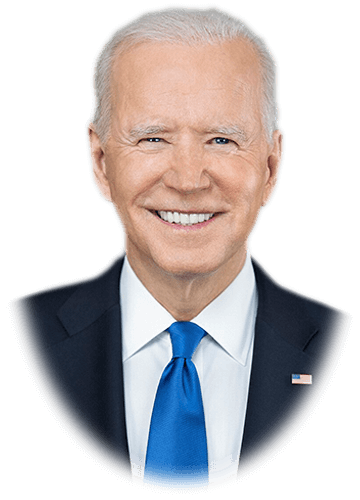
Texas Border Business
AUSTIN, Texas – The NFIB Small Business Optimism Index increased 0.4 points in May to 89.4, which is the 17th consecutive month below the 49-year average of 98. The last time the Index was at or above the average was in December 2021. Small business owners expecting better business conditions over the next six months declined one point from April to a net negative 50%. Twenty-five percent of owners reported that inflation was their single most important problem in operating their business, up two points from last month and followed by labor quality at 24%.
“Overall, small business owners are expressing concerns for future business conditions,” said Bill Dunkelberg, NFIB Chief Economist. “Supply chain disruptions and labor shortages will continue to limit the ability of many small firms to meet the demand for their products and services, while less severe than last year’s experience.”
Although state-specific data is unavailable, NFIB State Director Annie Spilman said:
“Inflation and the labor shortage continue to exacerbate the challenges our Main Street businesses are facing, including skyrocketing property taxes. But lawmakers have an opportunity to provide real relief. Passing the Governor’s tax plan will result in meaningful tax cuts for Texas families and our job creators. The Legislature has already delivered one major victory for small business owners by ensuring regulatory consistency. Now lawmakers must come together to cut Texans taxes too.”
Key findings include:
- Forty-four percent of owners reported job openings that were hard to fill, down one point from April and remaining historically very high.
- The net percent of owners raising average selling prices decreased one point to a net 32% (seasonally adjusted), still an inflationary level but trending down.
- The net percent of owners who expect real sales to be higher deteriorated two points from April to a net negative 21%.
As reported in NFIB’s monthly jobs report, owners’ plans to fill open positions remain elevated, with a seasonally adjusted net 19% planning to create new jobs in the next three months. Overall, 63% of owners reported hiring or trying to hire in May, up three points from April. Of those hiring or trying to hire, 89% of owners reported few or no qualified applicants for their open positions.
Fifty-seven percent of owners reported capital outlays in the last six months, up one point from April. Of those making expenditures, 38% reported spending on new equipment, 24% acquired vehicles, and 12% spent money on new fixtures and furniture. Fifteen percent improved or expanded facilities and 7% acquired new buildings or land for expansion. Twenty-five percent of owners plan capital outlays in the next few months, up six points from April.
A net negative 8% of all owners (seasonally adjusted) reported higher nominal sales in the past three months. The net percent of owners expecting higher real sales volumes deteriorated three points to a net negative 21%.
The net percent of owners reporting inventory increases increased five points to a net negative 2%. Not seasonally adjusted, 15% of owners reported increases in stocks and 14% reported reductions. Twenty percent of owners recently reported that supply chain disruptions still have a significant impact on their business. Another 32% reported a moderate impact and 31% reported a mild impact.
A net negative 3% of owners viewed current inventory stocks as “too low” in May, up two points from April. By industry, shortages are reported most frequently in retail (17%), manufacturing (15%), finance (13%), and agriculture (8%). Shortages in construction (3%) have reduced. A net negative 2% of owners plan inventory investment in the coming months.
The net percent of owners raising average selling prices decreased one point from April to a net 32% (seasonally adjusted), the lowest since March 2021. Unadjusted, 12% of owners reported lower average selling prices and 47% reported higher average prices. Price hikes were the most frequent in retail (62% higher, 6% lower), wholesale (54% higher, 19% lower), construction (50% higher, 4% lower), and finance (49% higher, 3% lower). Seasonally adjusted, a net 29% plan price hikes (up eight points).
Seasonally adjusted, a net 41% of owners reported raising compensation, up one point from April. A net 22% plan to raise compensation in the next three months, up one point. Ten percent of owners cited labor costs as their top business problem and 24% said that labor quality was their top business problem. Labor quality was in second place as the top business problem.
The frequency of reports of positive profit trends was a net negative 26%, down three points from April. Among owners reporting lower profits, 29% blamed weaker sales, 26% blamed the rise in the cost of materials, 13% cited the usual seasonal change, 12% cited labor costs, 6% cited lower prices, and 3% cited higher taxes or regulatory costs. For owners reporting higher profits, 52% credited sales volumes, 17% cited higher prices, and 16% cited usual seasonal change.
One percent of owners reported that all their borrowing needs were not satisfied. Twenty-seven percent reported all credit needs met and 63% said they were not interested in a loan. A net 6% reported their last loan was harder to get than in previous attempts.
Four percent of owners reported that financing was their top business problem. A net 24% of owners reported paying a higher rate on their most recent loan, down two points from April.
The NFIB Research Center has collected Small Business Economic Trends data with quarterly surveys since the fourth quarter of 1973 and monthly surveys since 1986. Survey respondents are randomly drawn from NFIB’s membership. The report is released on the second Tuesday of each month. This survey was conducted in May 2023.
About NFIB:
For 80 years, NFIB has been the voice of small business, advocating on behalf of America’s small and independent business owners, both in Washington, D.C., and in all 50 state capitals. NFIB is nonprofit, nonpartisan, and member driven. Since our founding in 1943, NFIB has been exclusively dedicated to small and independent businesses and remains so today. For more information, please visit www.NFIB.com.

















